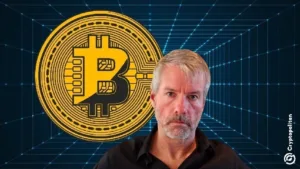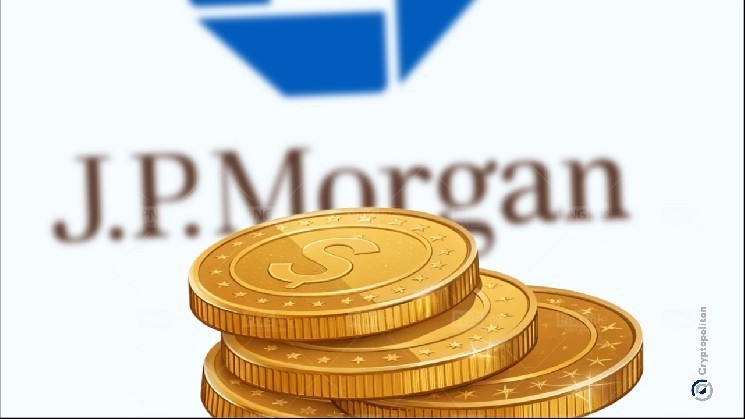JPMorgan Chase has created a new digital currency called JPMorgan Deposit Token (JPMD) that lives on the blockchain and is only available to trusted institutions like large corporations, asset managers, and pension funds.
JPMD will cater to institutions that want the legal protections, interest payments, and bank integration that regular stablecoins don’t fully offer to move money quickly, safely, and around the clock.
JPMD combines traditional banking features with blockchain speed and access on a public blockchain (Base, built on Ethereum) to attract big institutions who fear stablecoins like USDC or USDT will raise concerns about regulation, stability, and trust.
But will deposit tokens like JPMD completely replace stablecoins for institutional use, or will they simply serve different purposes and grow side by side?
How are deposit tokens different from stablecoins?
Deposit tokens fit into commercial banks’ existing financial and legal framework because they come with added benefits, like deposit insurance, interest payments, and accounting clarity for managing large volumes of funds.
On the other hand, stablecoins don’t enjoy the same trust or integration with banks because the US Congress is still debating the rules around using and backing them.
In addition, the openness and availability of stablecoins for trading, remittances, lending, DeFi protocols, and as a fast way to store and move value across borders have helped them grow into a $260 billion market.
Constrastly, deposit coins set large transactions, enable tokenized securities, handle business-to-business payments, and manage digital cash in a way that ties back to a real-world bank account to serve the complex needs of institutions.
So, while stablecoins operate outside the bounds of traditional finance and serve a wide global audience, deposit tokens help the banks move money faster and more efficiently within the trusted, regulated walls of the banking system.
Why does JPMorgan believe JPMD is better for institutions?
JPMD combines the convenience of blockchain with the confidence and structure of commercial banking for institutional users who need digital money that moves fast but also complies with strict legal, financial, and operational standards.
JPMorgan hosts JPMD on the Base blockchain (a public Layer 2 network built by Coinbase on top of Ethereum) to protect it from misuse or unwanted exposure and allow only verified institutional clients to interact with the system.
This way, the bank creates access to faster settlements and lower fees while controlling who uses the token through permissioned access. The Base blockchain bridges JPMD to future blockchain use cases with its connection to Ethereum’s broader ecosystem.
Businesses can also use JPMD in treasury operations, accounting systems, and financial reports without the extra friction that comes with third-party stablecoins. This is because the token allows them to treat it like cash they already hold in their JPMorgan accounts.
Accountants, CFOs, and risk officers can easily trust, track, and report JPMD tokens because they are tied directly into the bank’s own infrastructure. This differs from stablecoins that sit outside the banking system and may raise questions about compliance or reserve backing.
JPMorgan also said JPMD will likely pay interest while still providing instant settlement and on-chain liquidity. This will make it more appealing as a long-term financial tool for institutions with large cash balances and wanting their funds to generate yield. The token may also become insured like bank deposits to reduce risk and offer a level of protection that stablecoins currently can’t match in high-value transactions.
Moreover, JPMD makes it easier for institutions to incorporate blockchain-based transactions without overhauling their internal workflows or facing delays due to incompatible systems. The token integrates seamlessly with enterprise treasury platforms, payment processing tools, and settlement engines. It also supports financial reporting systems to manage cash flow, settle trades, facilitate cross-border payments, and ensure regulatory compliance.
Businesses can also settle payments across jurisdictions instantly with JPMD to reduce delays, high costs, and limited operating hours in cross-border business-to-business (B2B) payments and tokenized asset settlements.
What could stop deposit tokens from taking over?
Deposit tokens have less potential as a universal digital cash solution because JPMD is only available to pre-approved institutional clients connected to the bank. While anyone with a crypto wallet can access and use stablecoins, the permissioned nature of deposit tokens prevents smaller businesses, startups, or individuals from accessing the token, despite it running on a public blockchain.
Banks using or issuing these tokens may face strict capital requirements and other compliance burdens. This is because current Basel guidelines classify digital tokens operating on public, permissionless blockchains as high-risk assets.
These institutions may be constrained by rules that make large-scale deployment expensive, risky, or not worth the effort, unless the Basel Committee updates its guidance or makes exceptions for well-structured deposit tokens.
Moreover, JPMD may end up being siloed within a limited ecosystem because many institutions and platforms may prefer Ethereum mainnet, Polygon, Avalanche, or private blockchains for their digital asset strategies over its Layer 2 network built on Ethereum (Base).
In contrast, Stablecoins like USDC and USDT are highly attractive to developers, fintech companies, crypto exchanges, and users in emerging markets who want to move value across platforms without worrying about permissioned access or network compatibility. These stablecoins operate on multiple blockchains, including Ethereum, Solana, and Tron. They have a wide global reach, widespread wallet support, and integration with decentralized applications.
Similarly, smaller firms, fintechs, and international businesses may not have the technical infrastructure, legal clarity, or compliance capabilities that large institutions require to work with a permissioned token tied to a US bank. Firms operating in multiple regions or jurisdictions may not want to maintain a relationship with a specific bank to undergo a complex onboarding process.
It may be difficult for deposit tokens to reach the scale and utility that stablecoins have already achieved when their growth is limited to a small circle of elite users. JPMD and similar tokens remain too tightly linked to individual banking ecosystems.
Stablecoins and deposit tokens will likely grow side by side
The infrastructure around digital tokens and stablecoins will decide which models succeed and at what scale as banks, governments, and global companies continue to experiment with tokenized assets, digital payments, and programmable money.
Both stablecoins and deposit tokens could grow together, serving different types of users and use cases if public blockchains become widely accepted as safe, reliable environments for moving real-world value.
It’s unlikely that either stablecoins or deposit tokens will completely replace the other, so the more realistic outcome is coexistence. Deposit tokens will likely dominate in highly regulated, high-value environments where trust, control, and integration with existing systems are essential. On the other hand, stablecoins will continue to lead in areas where openness, speed, and accessibility matter most, such as retail payments, global remittances, and decentralized applications.
Read the full article here










